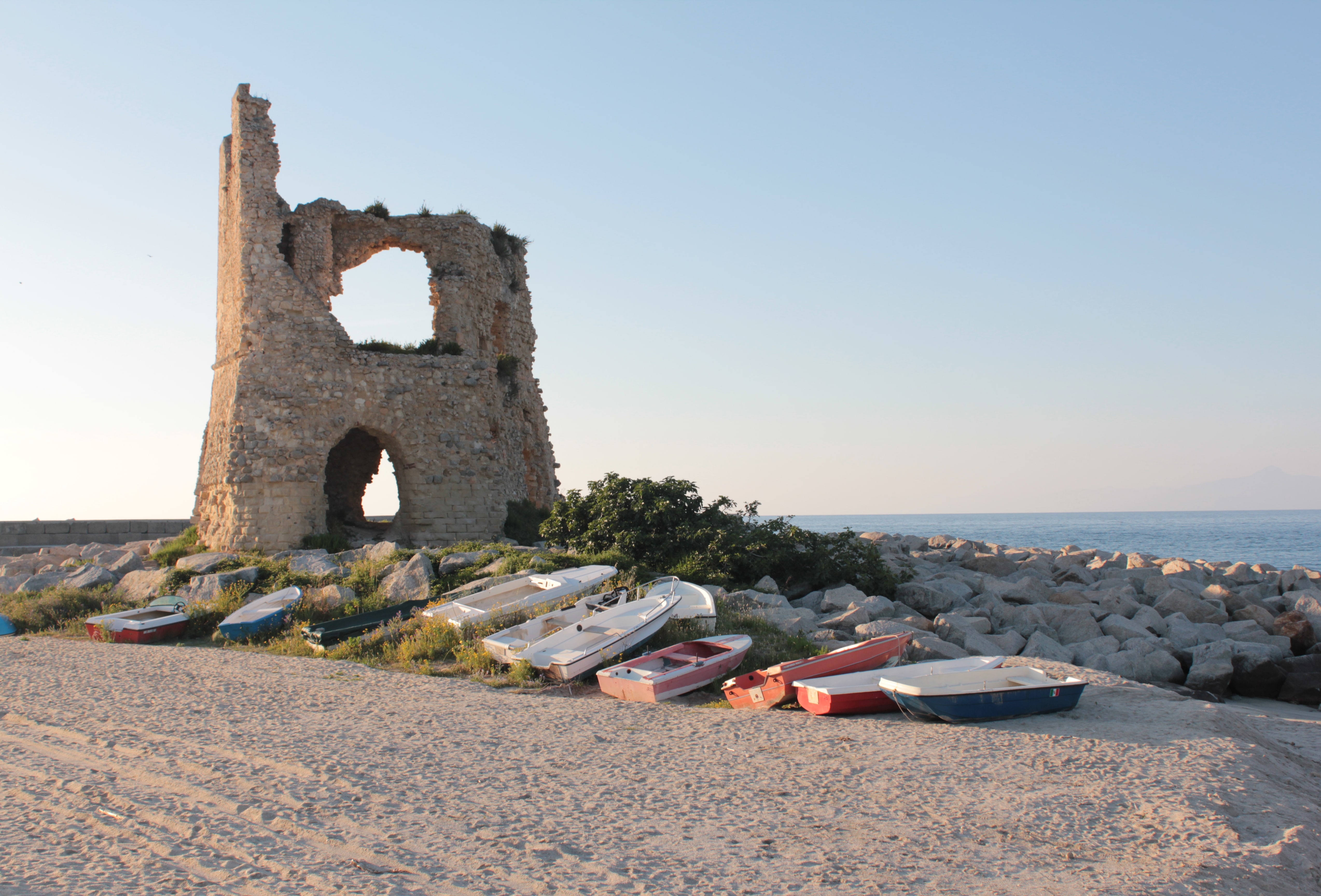Briatico (Euriatikòn, Ευριατικόν in Byzantine Greek; Vriàticu in Calabrian dialect) is an Italian town of 4 167 inhabitants [1] in the province of Vibo Valentia in Calabria.
The foundation of Briatico is traditionally traced back to the Locresi, at the time of their passage to Hipponion. The first certain evidence of the existence of Briatico dates back to the 12th century when Roger the Norman, in a bull concerning the foundation of the diocese of Mileto, mentioned the small town of Euriatikon (the current Briatico). The same name was then reported in ten parchments compiled between 1130 and 1271. In these documents we read that in 1276 the territory of Euriatikon extended from the Trainiti river to the Potame river, including twenty-two villages. The toponym Briatico is found, however, also in the thirteenth century next to that of Euriatikon.
Graphic reconstruction of the castle of Briatico Vecchia by Landro Nicola
During the feudal period the town passed under various domains. Niccolo de Trayna had it in 1269 from King Charles I of Anjou and kept it until his death around 1278. It was then the turn of Adamo d'Elmis (until 1304) followed by Gilberto de Santillis, Leone da Reggio , grand seneschal of the Kingdom of Naples, and his daughter Sibilla who, married to Pietro III Ruffo Count of Catanzaro, brought him some fiefdoms including Briatico. It remained with the Ruffo di Catanzaro until 1404 when, due to the rebellions against the sovereign, Nicolo Ruffo was ousted by King Ladislao who sold Briatico to Rinaldo d'Aquino, baron of Castiglione. During the last century of the Middle Ages there were numerous changes in the dominion over Briatico. From the Aquino family the village went to the Ruffo di Montalto to pass, then, to Marino Marzano (by maternal succession) who had it until 1464 and, subsequently, to his son-in-law Leonardo di Tocco who held it for only three years. 1494, the date shown under the city coat of arms in Roman figures, is the year in which Briatico will become a free city, governed by a mayor.
But already in 1496 the fief was granted to the Spaniards de Castro Bisbal who obtained the title of counts. With them began a period of greater stability of the dominion that lasted until the end of the sixteenth century, when this family died out, the fiefdom passed with the Pignatelli di Monteleone, a family that ruled over Briatico until the subversion of feudalism (1806).
Of Briatico Vecchio, which stood on a hill to the right of the Murria river, destroyed by the earthquake of 1783, remain the ruins of the medieval castle built by Ferdinando Bisbal and of the ancient town, which at the time had 12 churches, 3 convents and it had enormous historical and cultural importance.
Only two of the 5 towers of the anti-Turkish defense system remain on the beach:
- The Rocchetta, a high coastal lookout tower with a pentagonal plan, originally built by the Greeks, rebuilt by the Romans, was remodeled in medieval times;
- Torre Sant'Irene, built by the Spanish Deputy Royal Government as a lookout against Barbarian incursions.
Remains of prehistoric times have been found such as terracotta, as well as other flint and obsidian tools, a vase with human remains inside and a rich set including a rock crystal pendant, amber grains and one of carnelian with engravings. It would be a human settlement dating back to the Copper Age. Then also Roman necropolis of the imperial age and remains of a building complex (perhaps thermal baths) also of the imperial age. Along the Murria valley there are medieval hermit caves, some of which are called "Grotte delle fate".
Few vestiges remain of the Convent of the Dominican Fathers founded in 1498 and of the Norman church of Santa Maria del Franco (11th century) destroyed by the earthquake of 1783. Of the church of Santa Maria del Franco is the statue of the co-patroness of Briatico, the Immaculate Virgin (formerly S. Maria del Ginocchio), a marvelously made seventeenth-century Spanish statue. From the cathedral of San Nicola, also now in ruins, comes the beautiful canvas of San Nicola painted in the 17th century by Tommaso di Florio, a painter from Vibon, and a 15th century crucifix. All these works are now preserved in the Mother Church dedicated to the patron Saint Nicholas.
(By Wikipedia)
https://www.palazzomarzano.it/index.php/en/briatico?tmpl=component&print=1&page=#sigProId36b48ec533
(Photo Pasquale Marcellini)

